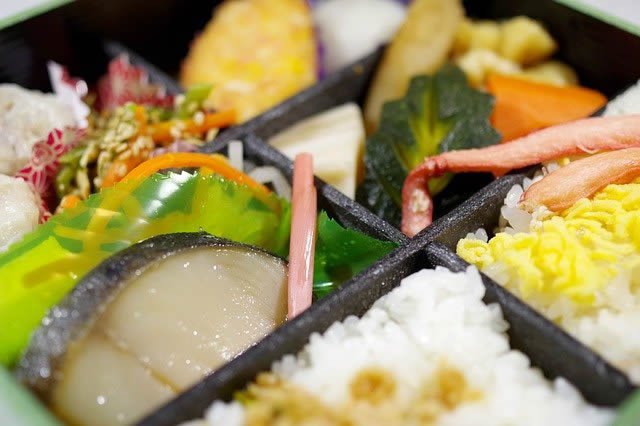先日から「Japan’s special take on a packed lunch -「日本の駅弁への思い入れ」を読んでいます。

・「日本の駅弁への思い入れ」(1)
・「日本の駅弁への思い入れ」(2)
Across the country, travellers rely on train station bento shops to buy their food and drink for a particular train trip, typically with choices tied to the area they’re in.
全国各地の駅弁屋では、列車の旅人がその土地ならではの食べ物や飲み物を購入出来る。
But this shop is different.
でも、この店は違う。
As well as offering local ekiben from the Tokyo region, Ekiben-ya Matsuri also sells popular options from destinations across the country
東京近郊のご当地駅弁はもちろん、「駅弁屋 祭」では全国各地の人気弁当も販売されており、
- from Hokkaido in the north to Kyushu in the south, allowing shoppers to forgo the train trip and jump straight to the prized meal of nearly any region they can imagine.
北は北海道から南は九州まで、電車を使わずともほぼ全地域の自慢の味を楽しめる。
The concept is popular:
このコンセプトが好評で、
the shop sells 10,000 such bento-style meals a day, and up to 15,000 on a weekend.
ここでは1日1万食、週末には1万5千食の弁当が売れている。
These movable feasts are a beautiful consequence of an efficient, widespread train network married with curious palates yearning to try beloved local specialties.
こうした「祝祭」は、効率的で広範囲な鉄道網と、地元で愛される名物料理を食べたいという好奇心の賜物であろう。
movable feast「移動祝祭日」。
Sampling special regional items from across the country runs deep in Japanese culture.
日本には、全国各地の名産品を味わうという文化が根付いている。
The concept of meibutsu, or ‘famous things’, plays out through two elements of travel:
「名物」または「名産」というコンセプトは、旅の2つの要素を通じて展開される、
ekiben and omiyage (packaged souvenirs gifted to family and friends).
駅弁とお土産(家族や友人向けに詰められた贈り物)だ。
While omiyage is a way to share meibutsu back home, ekiben is a way to enjoy a specialty item yourself.
お土産は名産品の故郷へのお裾分け、駅弁は名産品を自分が味わうものである。
読んでいたら、駅弁を食べたくなってきました(笑)。
奈良の柿の葉寿司、京都の鯖寿司、そして牛肉どまん中!
最近は、高速のサービスエリアでも見かける時があって(たまたま催事でもあったのか?)鯖寿司を買ったことがあります。
確かに駅弁は自分のため、そしてこの先の旅の期待も相まって、さらに美味しく感じるのかもしれませんね。
理由は単純明快!「少ないコストでしっかり楽しく学べるから」。
私自身の経験(高機能でビックリ)をびっしり書いていますので、良かったら読んでみてください。
下のバナーからどうぞ!






